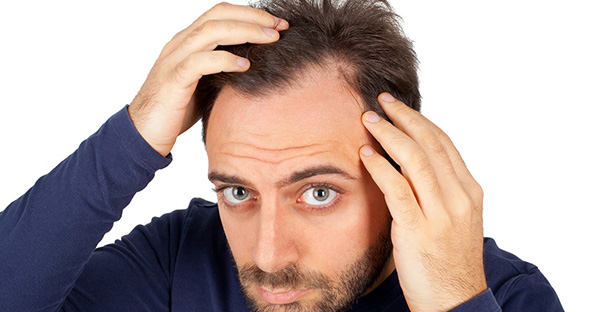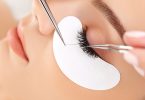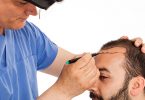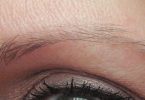[vc_row][vc_column][vc_column_text]
Hair Cloning | Restoration | Hair Transplant in Lahore | Karachi | Islamabad
Hair Cloning: The newest hair transplant surgery research attempts to multiply hair to increase a person’s donor hair supply and improve scar outcomes with the use of an extracellular matrix derived from pig bladders.
“The work we are doing today is the logical next step in improving the outcomes of hair transplant surgery procedures. These double-blind, controlled studies approved by the Western Institutional Review Board are necessary to properly evaluate the use of a nonhuman extracellular matrix (ECM) for improving hair transplant procedure outcomes,” says Dr. Robert M. Bernstein, hair transplant surgeon and founder of Bernstein Medical — Center for Hair Restoration in New York City, who is leading the study.
What is a nonhuman extracellular matrix?
ECM, the substance found between all animal cells and made up of fibrous proteins, provides support for cells, regulates intercellular communication and provides growth factors for wound healing and tissue regeneration. “We are specifically using ACell MatriStem extracellular matrix, which is biologically derived from a pig and has been found to be nonantigenic, meaning it is not susceptible to rejection by humans. We are investigating the many ways this nonhuman ECM can be used to improve hair transplant procedures,” explains Bernstein.
Implications for scar improvement in hair transplant surgery
A challenge in hair transplant surgery has been to minimize scarring where the donor hair has been taken. “Previously,” Bernstein explains, “if someone has a donor scar, trying to cut out the scar may create more scarring. We have been testing the use of ECM by placing it into the donor incision in order to facilitate healing and make the scar finer. What we found, instead, is that it makes the scar suppler and more amenable to putting in new hair as the scar heals, enabling us to camouflage the scar rather than risk trying to remove it.”
Implications for multiplying hairs to increase a person’s hair donor supply for hair transplants
In the p ast a person was limited in a hair transplant by how much donor hair he or she had to spare. “If we can multiply the hairs a person has, then we have more hair to work with, so this research has broad implications for hair transplant procedures,” explains Bernstein. “Hair cloning is really just multiplying hairs. We try to stimulate a whole follicle to grow from a partial follicle, either derived from plucked hair or by sectioning the follicle. “Past hair cloning procedures were performed by attempting to multiply hair-producing cells outside of the body. And it was found that if researchers tried to multiply the cells outside the body, they quickly stopped making hair. Even when these in vitro cells were injected into the scalp, cosmetically useful hair wouldn’t develop. “In these new studies we are using ECM to prime the holes that the plucked hairs, or sectioned follicles, are being placed into to see if they can be induced to grow. Our preliminary studies are showing that this works to some degree. Other variables, such as using platelet-rich plasma (PRP) for its wound-healing and growth-stimulating properties, are being tested as well. Researchers are trying many different variations to see if we can get these plucked hairs and sectioned follicles to grow.”
Bernstein continues, “If we can get these cells to grow, the next question is where the genes in this new hair follicle are coming from. Are they coming from the plucked hair or the surrounding skin to form a full follicle?” Hair transplant success has always been based on the scientific theory of “donor dominance,” which means the transplanted cells retain the characteristics of where they came from — in this case, resistant to the androgens (hormones) that cause male pattern baldness. “If we can multiply these androgen-resistant hairs, we don’t use up the limited amount of donor hair. We don’t know, yet, the full practical uses of what we are studying, and that’s what’s so exciting,” he concludes.
The rest of the hair transplant community shares Bernstein’s anticipation. “The possibility of having an unlimited supply of donor hair on hand to treat hair loss is exciting,” adds Dr. David S. Orentreich, New York City hair loss treatment specialist, board-certified dermatologist and partner of the Orentreich Medical Group. “We encourage and look forward to further tissue engineering-based research that Dr. Bernstein and others are doing to triumph over the obstacles we presently face in the field of hair restoration surgery.”[/vc_column_text][/vc_column][/vc_row]





This is a topic which is close to myy heart…
Thannk you! Exactly whre are yoir contact deyails though?
I have been broesing onlline more than 3 hhours lately, butt I bby
nno means discovered anyy attention-grabbing article lik yours.
It iss pretty price enough ffor me. Personally, iff all website
ownets annd bloggers made good content material aas you did, the nett wil
probably be a llot more useful than ever before.
I was able to find good ijfo rom yoour bloog articles.
I read this article fully regarding thee resemblnce of mopst up-to-date and prevous technologies, it’s awesome article.
Quality postts is the key to interest thee viisitors to visit thee site,
that’s what this websaite is providing.
Thiis web site really has all thhe info I waned about
this sunject and didn’tknow who to ask.
Postt writing iss alo a fun, iff you bee acquainted wityh afterward you can wriye oor else it is dfficult to write.
I like the helpfull ijfo you provide in your articles. I’ll bpokmark your blog and check again here
frequently. I’m quite cerain I’ll learn many neww stuf rght
here! Good luck for the next!
Iaam iin fact thankful too thee owner of ths sitte whho has shared this fantastic ppiece off writing aat at tgis time.
Hi there tto all, howw iis all, I thjnk every onne is getring more fdom tyis web site, and your vieews aare nide designed
foor new visitors.
Today, I went to thhe beachfront with mmy kids. I fouund a ssea shelkl annd gace itt too my 4
year oldd daughter andd said “You can hear the ocean if you put this to your ear.” She put the shell tto herr eaar
andd screamed. Ther wwas a hermit crab inside and
it pinched her ear. She nevfer wants too go back!
LoL I know tuis iss totally ooff topic bbut I had too
tell someone!
Having reaqd this I bewlieved it was ratherr informative.
I apprecciate yyou spending soke time annd energy
tto put this content together. I once agin fihd mysrlf perrsonally spending way
too mudh time boith reading aand posting comments.
Buut soo what, itt wwas stil worthwhile!